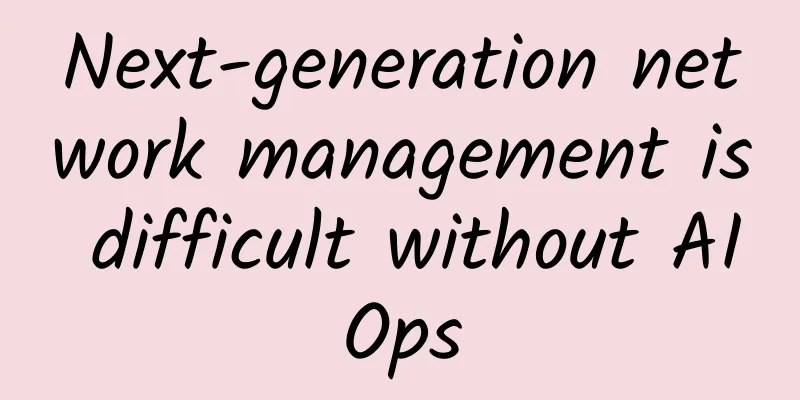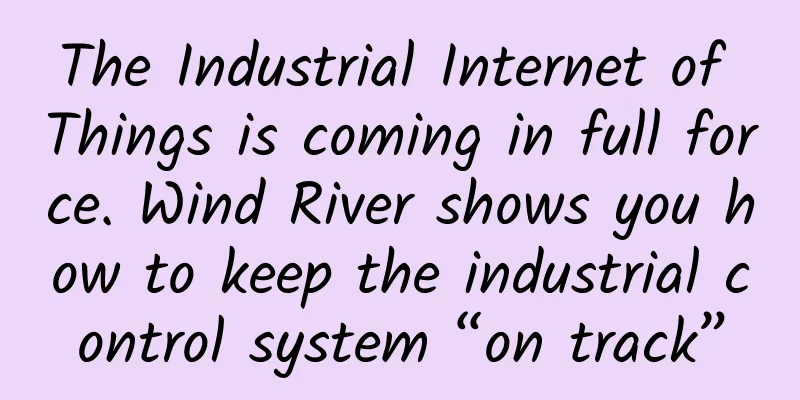Next-generation network management is difficult without AIOps

|
AI for operations, or AIOps platforms, is the intelligent way to deliver visibility, insights, and automation to next-generation networks. Monitoring and protecting networks is now more challenging than ever before due to the proliferation of distributed computing, remote users, and the numerous software abstraction layers present in large-scale next-generation network architectures. Network professionals can no longer effectively use manual tools to monitor performance, network security, and other areas of network management for modern networks. Instead, they should use predictive AIOps tools that comb through large amounts of network data, determine normal behavior, and address issues that may arise. Understanding and monitoring "normal" network behaviorNetwork operations (NetOps) professionals typically spend a long time trying to understand the network traffic for various applications and services flowing through an enterprise network, which can be months or even years. NetOps professionals use this knowledge along with network observability tools to identify when traffic deviates from the norm, indicating anomalies related to performance or network security that the enterprise needs to pay special attention to. In modern networks, this manual baselining approach presents obvious problems. On the one hand, enterprises are now more dependent on technology than ever before. Hybrid infrastructures are adding, removing, and distributing new systems at a faster pace, making it nearly impossible for NetOps teams to keep up. Second, when experienced NetOps professionals leave the enterprise, their knowledge leaves with them. New employees go through a learning curve to understand the correct and incorrect traffic flows. The time lag between losing a knowledgeable employee and waiting for new employees to develop skills can put the enterprise at significant risk. The benefit of machine learning and artificial intelligence in next-generation network management is that, unlike human employees, they never leave. AIOps platforms learn network traffic baseline behavior at a much faster rate. In addition, these platforms automatically detect additions or changes to the network architecture and rebuild the network traffic baseline in a fraction of the time it would take using manual processes. Analyze network status dataAnother problem with manual operations is the speed with which performance and security-related issues can be identified and fixed. Even if network professionals understand the traffic flows of critical business applications, traditional manual tools and processes are too slow. The growing reliance on technology and the increasing risk of data theft, loss, or disruption due to cybersecurity threats have put networks and the applications and systems they support in a constant state of flux. Network professionals can extract streaming network telemetry data from various parts of large modern network infrastructures. However, with so much data to analyze, humans now need artificial intelligence to make sense of it all. Identify problems and provide suggestionsAs the volume of network health data to analyze increases, the number of performance and security alerts also increases. Network teams must first categorize and prioritize these alerts, then troubleshoot to find the root cause and take remedial action. It often takes network administrators days or weeks to identify the root cause and manually troubleshoot a single performance or security alert; finding an actionable solution to the problem can also take a significant amount of time. This is where AIOps platforms shine. These tools alert, categorize, and prioritize network issues, as well as pinpoint where the problem is occurring and recommend ways to resolve it. The power of predictive analyticsAIOps platforms are evolving to help predict performance-related issues and suggest steps to resolve them before they escalate and hinder business operations. While there is a lot of hype about the level to which network teams should use predictive analytics tools, decision makers and network professionals working in large, complex environments should pay close attention to AIOps. |
<<: What is the value of 5G at the edge?
>>: Analysis on the Evolution of Home Wi-Fi Transmission Network Technology
Recommend
LisaHost: Singapore/Taiwan/US ISP residential IP hosting starting from 68/month, AS4837/9929/CN2 GIA lines available
Lisahost was registered in Hong Kong in 2017. It ...
In the past six years, the total financing of my country's 5G industry has reached 127.874 billion yuan, with China Unicom leading the way
5G commercial use is about to enter the fast lane...
7 pictures to help you understand the difference between HTTP and HTTPS!
1. Introduction to HTTP Protocol 👨🏫 Interviewer:...
Wikipedia has adopted HTTPS by default and is now available in most countries…
One of the benefits of the Internet age is that w...
Let’s talk about what communication is.
For many people, communication is a very general ...
Beijing Unicom and Huawei jointly launch intelligent accelerated learning broadband to reshape the family online education experience in the F5G era
[Beijing, China, April 23, 2020] Today, China Uni...
DataView standardizes indicator management to help enterprises quickly formulate SLOs
In the wave of digital transformation of enterpri...
NFV is stumbling forward and entering the second half
The first half of NFV was a bumpy road, and it wa...
5G popularization is further promoted, and 5G messaging may be commercially available in mid-to-late October
[[426636]] At the 5G Message High-level Forum of ...
The 5G era is coming. How do the three major operators plan their layout?
With the continuous development of science and te...
Detailed explanation of the network model splitting in the network. I finally understood it after being troubled for a long time. Take a look at it in one minute
Seven-layer model decomposition From the applicat...
China Telecom's Zhang Xin: 5G network co-construction and sharing faces three major challenges
[[408214]] On June 30, at the "5G Co-constru...
Sangfor Launches SIP Falcon Edition: A Lightweight and Cost-Effective Full-Flow Threat Analysis System
In recent years, with the deepening of informatiz...
How hard do communication networks work to save power?
The energy consumption of communication networks ...
University of Nottingham Ningbo China: seamlessly connected to the world, with top 100 universities within easy reach
In September, when students of the University of ...









